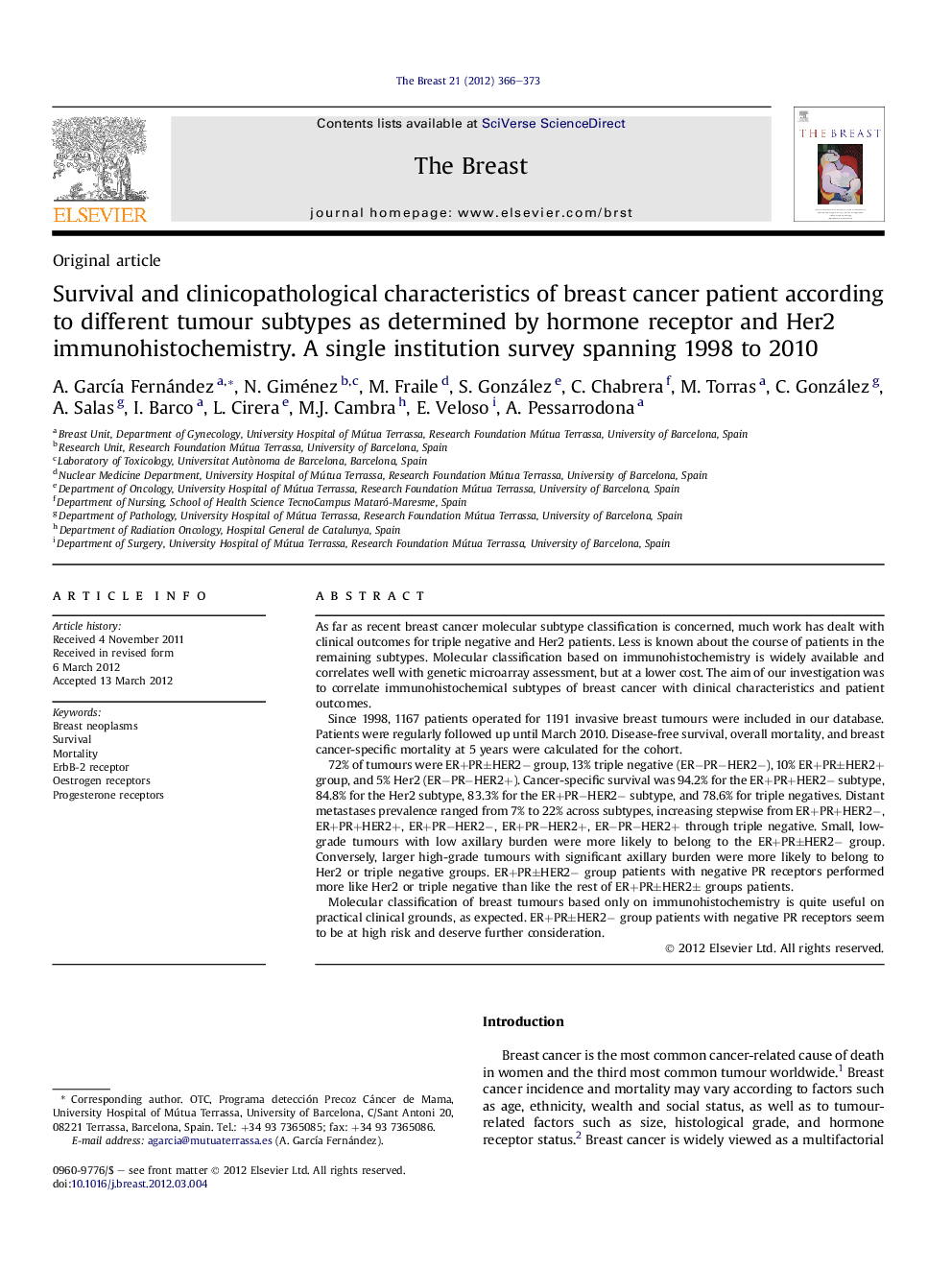| کد مقاله | کد نشریه | سال انتشار | مقاله انگلیسی | نسخه تمام متن |
|---|---|---|---|---|
| 3909025 | 1251201 | 2012 | 8 صفحه PDF | دانلود رایگان |

As far as recent breast cancer molecular subtype classification is concerned, much work has dealt with clinical outcomes for triple negative and Her2 patients. Less is known about the course of patients in the remaining subtypes. Molecular classification based on immunohistochemistry is widely available and correlates well with genetic microarray assessment, but at a lower cost. The aim of our investigation was to correlate immunohistochemical subtypes of breast cancer with clinical characteristics and patient outcomes.Since 1998, 1167 patients operated for 1191 invasive breast tumours were included in our database. Patients were regularly followed up until March 2010. Disease-free survival, overall mortality, and breast cancer-specific mortality at 5 years were calculated for the cohort.72% of tumours were ER+PR±HER2− group, 13% triple negative (ER−PR−HER2−), 10% ER+PR±HER2+ group, and 5% Her2 (ER−PR−HER2+). Cancer-specific survival was 94.2% for the ER+PR+HER2− subtype, 84.8% for the Her2 subtype, 83.3% for the ER+PR−HER2− subtype, and 78.6% for triple negatives. Distant metastases prevalence ranged from 7% to 22% across subtypes, increasing stepwise from ER+PR+HER2−, ER+PR+HER2+, ER+PR−HER2−, ER+PR−HER2+, ER−PR−HER2+ through triple negative. Small, low-grade tumours with low axillary burden were more likely to belong to the ER+PR±HER2− group. Conversely, larger high-grade tumours with significant axillary burden were more likely to belong to Her2 or triple negative groups. ER+PR±HER2− group patients with negative PR receptors performed more like Her2 or triple negative than like the rest of ER+PR±HER2± groups patients.Molecular classification of breast tumours based only on immunohistochemistry is quite useful on practical clinical grounds, as expected. ER+PR±HER2− group patients with negative PR receptors seem to be at high risk and deserve further consideration.
Journal: The Breast - Volume 21, Issue 3, June 2012, Pages 366–373